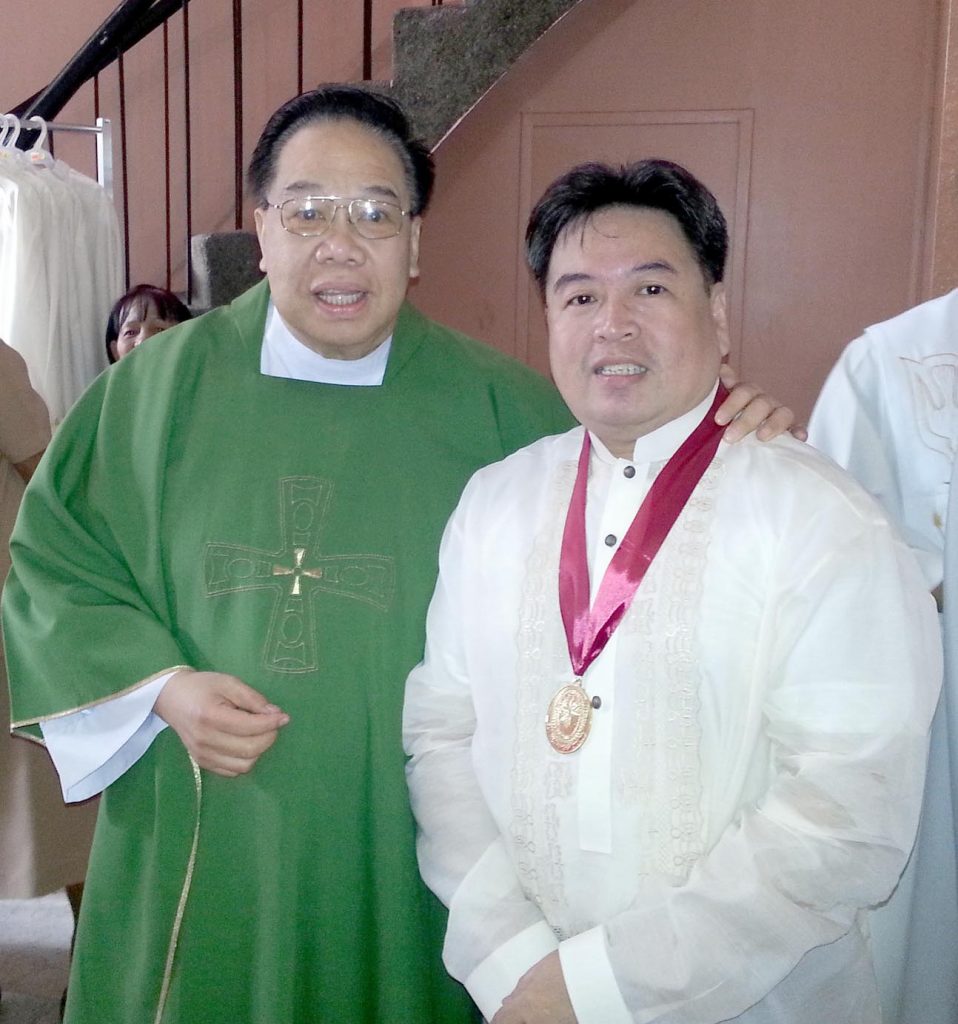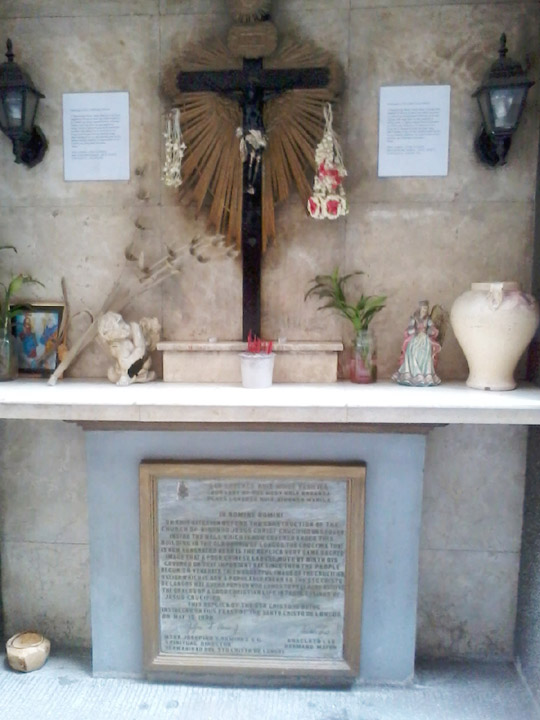The Sto Cristo de Longos shrine on Tomas Pinpin corner Ongpin streets was not as widely adorned in the past as it is today.
According to Norma Martin, who has been selling sampaguita garlands on the same corner ever since she was 12 (more than three decades ago), the Cross was dirty and neglected. Nobody took much notice of it and vagrants even slept in front of it.
Jimmy Go, who leads a group of volunteers that now oversees activities related to the Cross, said the transformation happened when his friend, Betty Ching, made a vow to the Cross in the hope that it would answer her prayers. She vowed that if her request was granted she would become its devotee.
Her prayers were answered. Making good her vow, she and a small group of volunteers began cleaning up the shrine. They later decided that the shrine needed a makeover rather than just a cleaning.
So, they approached the building owner and asked permission to spruce up the Cross. The owner agreed, and even had the building engineer help the group in their renovation work. The new shrine was unveiled on March 22, 1992.
After the unveiling of the new cross, people slowly began to flock to it. Volunteer Virginia Ocampo began coming twice a day to pray. “I come here to pray for peace within the neighborhood and protection for my friends and loved ones.”
Supermarket employee Perla Forte says, “I feel lighter inside after I pray to the Cross, whatever is bothering me that day.”
Many of the devotees swear that they have their prayers answered. Martin even claimed that it has healed her of her diabetes.
As the number of answered prayers grew, some began leaving monetary donations on the altar as a thanksgiving offering. The volunteers decided to collect all the cash and used the accumulated sum to buy grocery items, which is then redistributed to the poor every year on March 22.
The Cross became more popular than it was before. It became a place where Catholics would pray alongside Buddhist and Taoists worshippers.

The Archdiocese of Manila has not made any official declaration or pronouncement on this particular shrine. But Monsignor Josefino Ramirez, former rector of Binondo Church, has installed a brass plate on the Cross. Inscribed on it is the title “Sto. Cristo de Longos.” He also posted a few prayers on the walls of the shrine.
Eight years ago, a full-time caretaker was hired to look after the Cross and keep it clean. Aside from Martin, it has drawn two manghihilot (massage therapist). They claim that the oil they use in their massage comes from the Cross itself. The Cross has also inspired a new kind of worship, with devotees driving up to the front of the shrine, saying a quick prayer and then driving off without ever getting out of their car.
Most of the devotees and volunteers only have a vague idea regarding the origins of the Cross they are adoring. Many only know that the Cross has been on the site all their life. They don’t seem to be aware of the existence of another Sto. Cristo de Longos in Binondo Church or that this was actually a street marker between the Dominicans and Jesuits. Many don’t even know the existence of the Venerable Hermandad de Sto. Cristo de Longos, the 310-year-old brotherhood that are devotees to the Sto. Cristo de Longos.
So, does this mean the Cross is not as miraculous as its devotees make it out to be? The true test is whether the object of devotion strengthened the devotees’ relationship with God. Did it help them gain a deeper understanding of His Grace and Mercy? Finally, as the person grows in maturity, God will become clearer to them, while the object of adoration should slowly fade in the background, after having served its purpose. — First published in Tulay Fortnightly, Chinese-Filipino Digest 27, no. 4 (July 22-August 4, 2014): 9.
